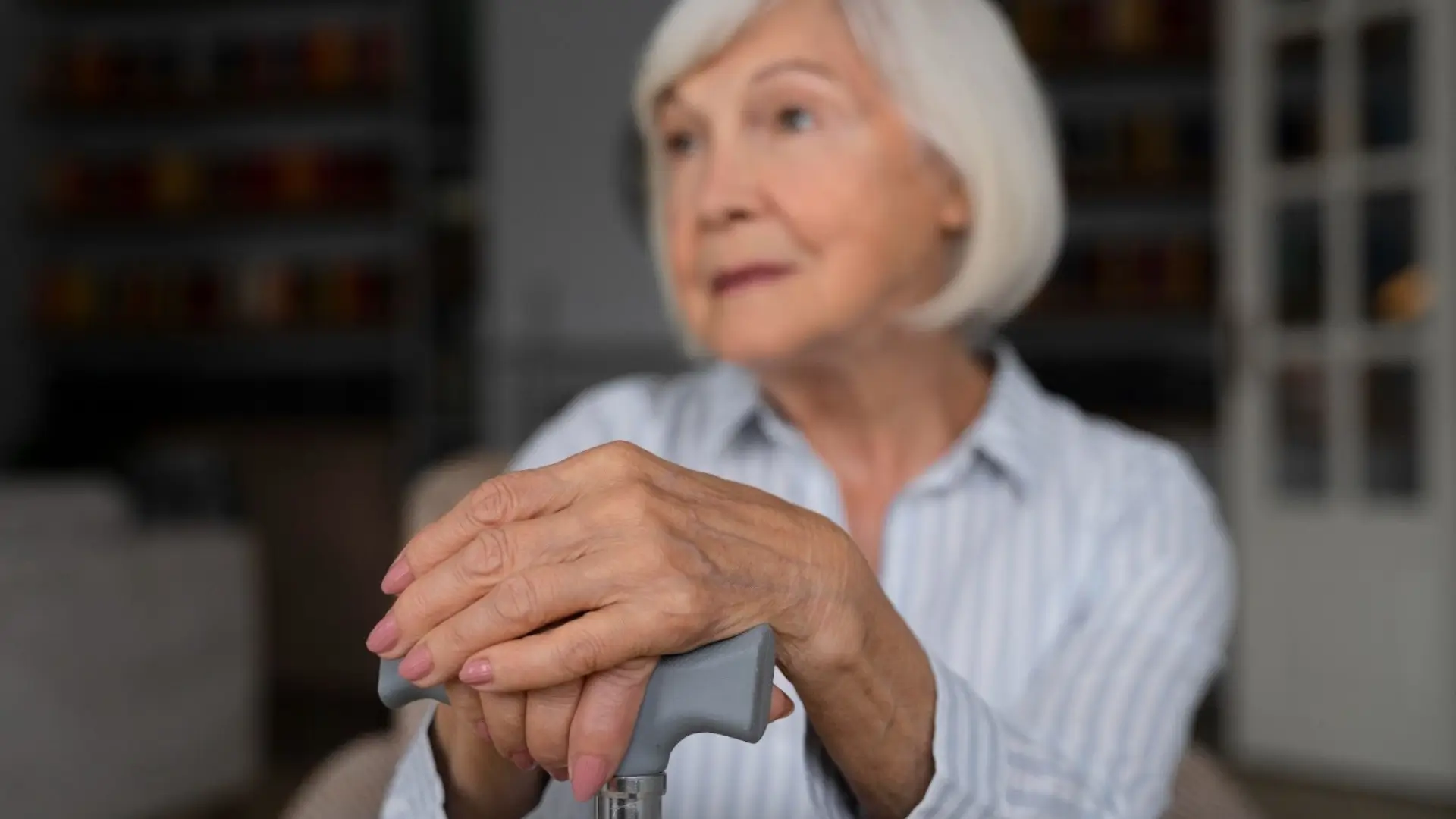
Osteoporosis is a progressive condition that weakens bones and increases the risk of fractures, affecting millions of people worldwide. In the U.S., about 12.6% of adults aged 50 and older and nearly 18% of those over 65 live with the condition. These numbers highlight the growing need for treatments that not only strengthen bones but also help maintain those gains over time.
Evenity (romosozumab-aqqg) is a prescription therapy designed for people at high risk of fractures. Unlike older medications, it works in two ways: by stimulating new bone formation and reducing bone resorption, or breakdown. The treatment is limited to 12 months, during which patients can experience rapid improvements in bone density and strength.
However, once treatment ends, many patients wonder what happens next. Studies show that bone density gains can decline within months if no follow-up therapy is started. In this article, we’ll explore what happens when you stop Evenity, how its effects change after discontinuation, and why a continued treatment plan is vital for protecting long-term bone health.
Key Takeaways
- After discontinuation, bone formation markers (P1NP) return to baseline while resorption markers (CTX) can rebound sharply, increasing bone turnover.
- Without sequential antiresorptive therapy, patients may lose a significant portion of bone density gains within 6–12 months and face a higher fracture risk.
- Immediate transition to bisphosphonates (e.g., alendronate) or denosumab (Prolia) after the final Evenity injection is essential to preserve bone mass.
- DEXA scans, bone marker tests, and lifestyle measures such as calcium and vitamin D supplementation are key to maintaining long-term bone health.
About: Doctor Medica is your trusted supplier of top-quality dermal fillers, viscosupplements, and more for your medical practice. We offer genuine products from leading brands at the lowest prices available. If you’re looking to order Evenity online for your practice, contact Doctor Medica today.
Post-Treatment Physiology: How Bone Turnover Markers Shift After Stopping Evenity

After completing the 12-month course of Evenity, the body’s bone metabolism gradually returns to its natural rhythm. Evenity’s generic name, romosozumab, is a sclerostin inhibitor that stimulates osteoblast activity (bone-forming cells) and suppresses osteoclast activity (bone-resorbing cells). Once therapy ends, this dual anabolic and antiresorptive action diminishes, and the balance of bone remodeling begins to shift.
Changes in Bone Turnover Markers
- Bone formation markers such as P1NP (procollagen type 1 N-terminal propeptide) drop sharply and return to baseline within a few months after discontinuation.
- Bone resorption markers, including CTX (C-terminal telopeptide), tend to rebound quickly. They often exceed pre-treatment levels. This surge reflects a sharp return of osteoclast activity and increased bone turnover, which can accelerate bone loss if not managed with maintenance therapy.
This rebound effect highlights why follow-up care is crucial. Without continued treatment, the net bone balance shifts toward resorption, potentially reversing much of the progress achieved during Evenity therapy. Clinicians closely monitor these biochemical markers to guide post-treatment care, optimize timing for the next therapy, and prevent early structural decline.
Rate and Extent of Bone Mineral Density Loss Without Maintenance Therapy

Clinical research shows that bone mineral density (BMD) gains achieved during Evenity therapy can decline substantially if no follow-up medication is started. Because romosozumab’s anabolic effect is temporary, the absence of a subsequent antiresorptive agent allows osteoclast activity to accelerate unchecked, leading to measurable bone loss.
- Within a year of stopping Evenity, patients can lose a significant portion of the BMD gains achieved during treatment, particularly if they do not transition to another osteoporosis therapy.
- The lumbar spine and hip, the areas that benefit most from Evenity, are also the first to experience loss once natural bone turnover resumes.
- Structural deterioration can occur as bone remodeling increases, raising fracture risk, particularly in older or high-risk women.
The degree of bone loss depends on multiple factors, including age, baseline bone density, and adherence to post-treatment maintenance therapy. These findings reinforce the importance of structured follow-up after completing Evenity’s 12-month regimen.
Importance of Sequential Antiresorptive Treatment (e.g., Alendronate, Denosumab)
To prevent rapid bone loss after stopping Evenity, patients are transitioned to antiresorptive therapy, typically bisphosphonates or denosumab, immediately after their final dose. This sequential treatment strategy consolidates newly formed bone and sustains fracture protection.
Standard follow-up options include:
- Bisphosphonates (e.g., Alendronate, Risedronate): These medications bind to bone surfaces and inhibit osteoclast activity, slowing down resorption and stabilizing BMD.
- Denosumab (Prolia): A monoclonal antibody that blocks RANKL, preventing osteoclast formation and maintaining long-term suppression of bone turnover.
The transition should occur immediately after the final Evenity injection, especially when starting denosumab. Delaying this step can cause a rapid rebound in bone resorption and significant bone loss. Clinical data show that patients who switch directly to alendronate or denosumab after stopping Evenity maintain markedly higher BMD compared to those who discontinue treatment entirely.
This seamless transition ensures the durability of Evenity’s benefits and is critical for long-term osteoporosis management.
Clinical Monitoring Recommendations and Patient Follow-Up After Discontinuation
Comprehensive monitoring is essential once Evenity therapy ends. Ongoing assessments help track bone health, evaluate the effectiveness of follow-up therapy, and ensure patient safety.
Key Follow-up Measures
- Bone Density Scans: Conduct a DEXA scan at the time of transition (or shortly thereafter) to establish a new post-Evenity baseline, followed by another scan 12 months later to assess response to the maintenance therapy.
- Laboratory Tests: Measure bone turnover markers like P1NP and CTX to monitor post-treatment changes in bone metabolism.
- Medication Review: Confirm initiation of a prescribed antiresorptive agent to maintain bone gains and prevent relapse.
- Lifestyle Counseling: Encourage adequate calcium and vitamin D intake, weight-bearing exercise, and fall prevention strategies.
- Patient Education: Reinforce that while Evenity rapidly builds bone, its benefits must be maintained through long-term care and monitoring.
Conclusion
What happens when Evenity is discontinued depends on how well post-treatment management is handled. After stopping romosozumab, bone turnover markers normalize or rebound, and the anabolic benefits fade. Without sequential antiresorptive therapy, bone density can decline rapidly, increasing fracture risk.
Immediate transition to agents like alendronate or denosumab is essential to protect newly formed bone. Through consistent monitoring, education, and follow-up, patients can extend Evenity’s benefits well beyond its 12-month course to maintain stronger, healthier bones for years to come.
FAQs
1. What happens to your bones after you stop Evenity?
Bone turnover returns to baseline, and without maintenance therapy, BMD may decline, increasing fracture risk. Sequential treatment prevents this loss.
2. How quickly does bone density decrease after stopping Evenity?
BMD can decline significantly within 6–12 months if no maintenance therapy follows. The rate of loss varies based on age, bone health, and treatment adherence.
3. What should I take after stopping Evenity?
Doctors usually prescribe bisphosphonates (like alendronate) or denosumab (Prolia) to help preserve bone density and reduce fracture risk.
4. Can I restart Evenity after discontinuation?
Restarting Evenity is not generally recommended because its anabolic effects plateau after 12 months, and safety data support only one treatment course.
References
Cosman F, Crittenden DB, Adachi JD, et al. Romosozumab Treatment in Postmenopausal Women with Osteoporosis. N Engl J Med. 2016;375(16):1532-1543. doi:10.1056/NEJMoa1607948
McClung MR, Bolognese MA, Brown JP, et al. A single dose of zoledronate preserves bone mineral density for up to 2 years after a second course of romosozumab. Osteoporos Int. 2020;31(11):2231-2241. doi:10.1007/s00198-020-05502-0
Lim SY, Bolster MB, Lim SY, Bolster MB. Clinical utility of romosozumab in the management of osteoporosis: Focus on patient selection and perspectives. International Journal of Women S Health. 2022;Volume 14:1733-1747. doi:10.2147/ijwh.s315184
Related Articles
Joanna Carr
Jaydess MRI Safety – Can You Do Magnetic Resonance Imaging?
Jaydess IUD is a form of contraception that is a small, T-shaped plastic device inserted into the uterus to prevent pregnancy.
Joanna Carr
Treating The Aging Neck And Decollete
Have an interest in learning about Treating The Aging Neck And Decollete? Browse Doctor Medica's extensive archive of blog postings.
Joanna Carr
Viscoderm Hydrobooster Technique – Best Practices for Optimal Results
Learn the Viscoderm Hydrobooster technique—explore best practices, application methods, and expert tips to achieve optimal results in skin hydration a...


